Comet enthusiast and hunter of lost comets in ancient books
As a teenager, he was fascinated by a bright comet, and since then he has not missed a single opportunity to observe these space wanderers. 10 years later, he missed a visual discovery. Eventually, he succeeded and gradually found 40 tiny comets observed by a spacecraft. Unfortunately these discoveries not bear his name. He stopped to search at archival data from observatories and started to identify historical comets in ancient books. Co-author of unique comet catalogs,
Maik Meyer.
What is your profession, your day time job?
I work as an expert for surface roughness and form (e.g. roundness, straightness, etc.) metrology for a manufacturer of such instruments. I am the head of our internal accredited calibration lab and work in standardizing bodies such as DIN/ISO. One could say that my daily job deals with the micrometer and nanometer microcosm.
What got you into astronomy?
I remember that already as a kid I was eager to read sci-fi novels. Jules Verne, of course, but later on Stanislaw Lem and the Strugatzki brothers were (and are still) my favourite reading food. In East Germany we also had astronomy as a standard course in 10th grade. I guess it started around when I was 15 or so. I tried several things like solar observing and variables but after 1P/Halley in 1986 – which I missed – I started serious comet observing with C/1987 P1 (Bradfield).
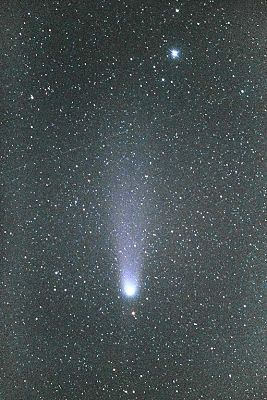
Did you consider to be become a professional astronomer?
Sure. I even wrote to some people in the former GDR to seek advice. The problem was that only 1-2 students of physics per year were allowed to specialize in astronomy. So, I played it safe and studied engineering. Sometimes I regret it for sure.
Comet C/1987 P1 (Bradfield) sparked your interest in comets. With what?
Comet C/1987 P1 (Bradfield) sparked your interest in comets. With what?
After trying solar observing and variables I didn’t get hooked on it. Then, in November/December 1987 our daily newspaper reported about a comet easily visible in the evening sky. I gave it a try with my 8x30 binoculars and was surprised to find a nice comet with a short tail! It was about 4-5 mag then. That started it all. I don’t know if it would have been different if the comet would have been less impressive. I then joined the East German “Arbeitskreis Kometen” and later the “Fachgruppe Kometen” after the unification.
You have been observing comets for over three decades, and no doubt you have seen many of them. Which were memorable for you and why?
There are many, to be honest. I have now observed over 170 comets visually and there are a lot which were special in a certain way. If I could choose three, then of course C/1996 B2 (Hyakutake) would qualify. Seeing it directly overhead with 65° tail at 0 mag is something I will never forget. I even saw the comet rising from inside the bus I was travelling with at the evening prior to this observing night! Truly a Great Comet.
The second would be the outburst of 17P/Holmes in 2007/2008. I received notice of the brightness surge very early, but then it was still below naked-eye reach. On the next day it was close to 2nd magnitude! And the following development – from a nearly star-like object to a very large blob – was fascinating and prompted me to obtain opera glasses to produce proper brightness estimates.
The last one is C/1997 J2 (Meunier-Dupouy) – my missed comet discovery. On May 7, 1997, I was observing comet C/1997 J1 (Mueller) which had been discovered a few days before. The comet was not easy, between 12 and 13 magnitude, and my conditions were not perfect. I managed to do an estimate and almost fell off my chair when I read the IAUC circular the next day that a new comet was found within a few arcmins of C/1997 J1 and about 0.5 mag brighter! I had seen only one comet – but which one? I will never know. If my sky would’ve been better, I might have seen two comets and reported the new one, too. A near miss.
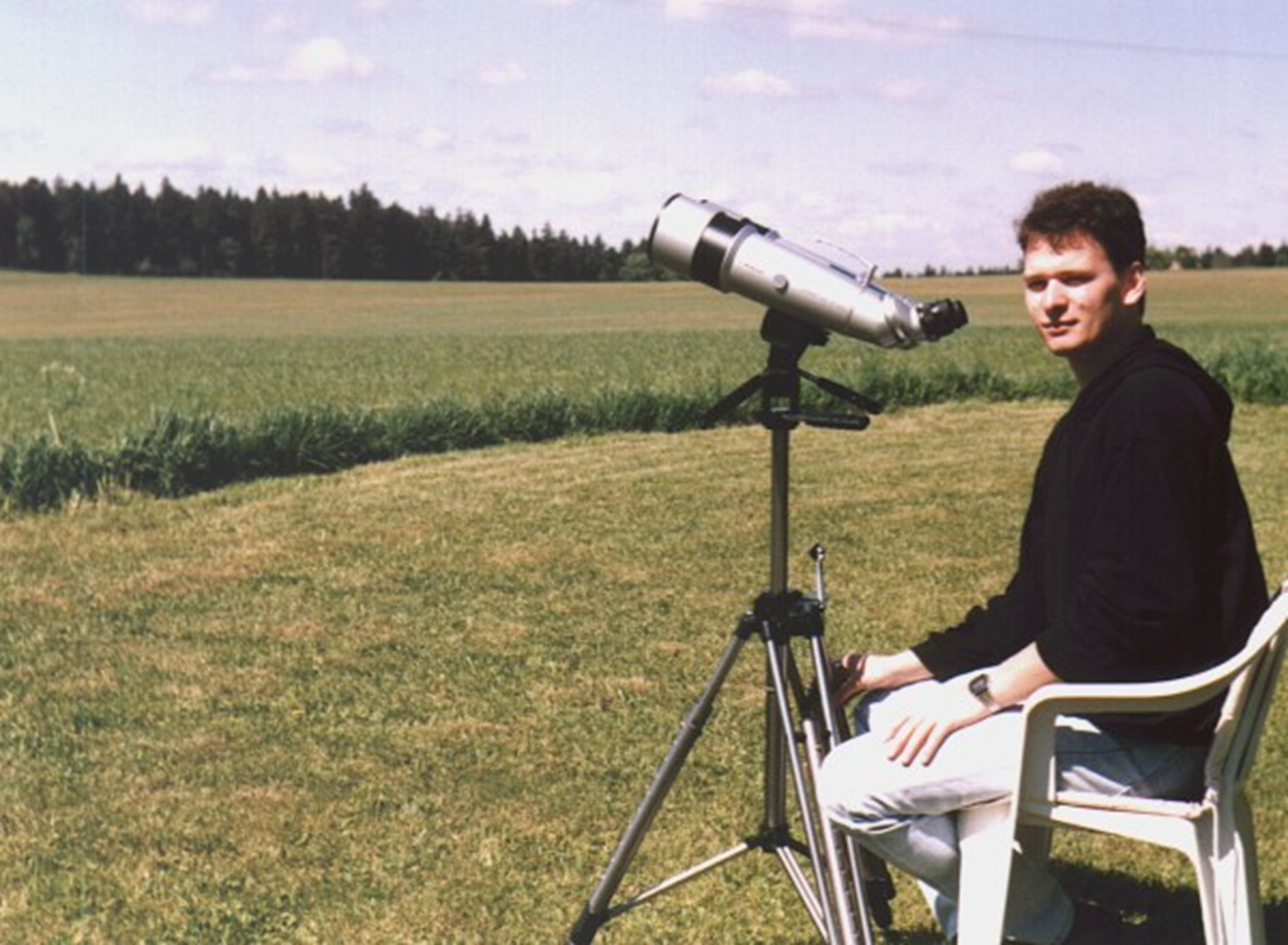
Where do you use to observe from?
I usually observe directly from my backyard at suburban conditions. For well-condensed comets I can go down to 13 mag with my 25-cm Dobson.
What telescopes do you use for observation?
I always observe with the most suitable telescope, according to the specific comet, from 10x50 binocular, 12-cm f/5 refractor and a 25-cm Dobsonian.
Some comets are visible from northern hemisphere, some from southern, several from both. Terry Lovejoy, famous comet hunter from Australia, travelled thousands miles to see a bright comet Hale-Bopp. Was there a comet you couldn´t observe and would like to?
Definitely C/2006 P1 (McNaught). I missed it seeing it a daytime due to hazy skies. I remember driving a few hours with Sebastian Hönig to find a better sky to no avail.
In the second half of the 1990s, usage of the Internet was not very widespread and websites have mostly universities, institutions and big companies. Nevertheless already in 1997 you created a website dedicated to comets „The Catalog of Comet Discoveries". Where did this idea come from?
I really don’t know anymore. I guess I just wanted to provide a website that reports news on comets and promotes my Catalogue. I also started the website of the German amateur working group for comets around that time. This was not really the first – there were some websites already around dealing with amateur comet observations, e.g. Charles Morris’ Comet Observation Homepage or the BAA Comet Section pages.
Nowadays, thanks to the internet, we can follow world of comets very well through many great web pages. But back then, in 80s and 90s it was totally different. How did you manage to keep track of new discoveries?
Yes, it was hard to receive information about new discoveries back then. This is why you needed to be part of some club or organization. When I started comet observing I quickly became member of the comet observers working group in the former GDR. There, information about new discovereies were circulated by postal mail - and only for the brighter comets! After the re-unification I became member of the german working group and subscribed to a paper circular issued by one of our members who had access to the IAU circulars. This was a big improvement. The final step was when I had access to the internet and subscribed to the IAU circulars. Now I was able to observe comets hours after discovery. Sometimes I was among the first few people who saw the comet shortly after the discoverer.
The Internet has also brought online discussion forums. You were the founder of Comet-ml to exchange experiences and quick communication in the comet hunters and observers community. How did the idea come about and how many members does the forum currently have?
Well, forum dedicated to asteroids, MPML, was already existing for some time, when I thought it would be a good idea to have a mailing list devoted just to comets. And I think this was a good idea. We are having now about 650 members and have passed our 20th anniversary in 2021.
And thanks to the internet we also have SOHO comets. Spacecraft SOHO (Solar and Heliospheric Observatory) became the most successful comet discoverer in history with more than 4000 discoveries to date. You were amongst first amateurs to chase for SOHO comets. How did you actually learn about the SOHO search?
From the IAU Circulars and then from the SOHO webpage. I was astonished that the images were freely available and that one could find comets in there! I knew that the SOLWIND and SMM missions in the 70’s and 80’s did that already, but SOHO was not really on my radar. I was also lucky to have a high-speed internet access at the university dorm and a lot of time. Even though we were not so many people searching for SOHO comets at the beginning download speed played already a big role in securing priority.
So you got inspiration and soon you discovered your first SOHO comet. Then you searched for more, almost on daily basis for about two years. Later you slown down and finally in 2008 you stopped the hunt for good. Why?
I would be the discoverer of a comet, albeit a only tiny comet. I was always fascinated by comet hunting, communicated with a lot of the visual discoverers of the 80’s and 90’s and this was also the reason for creating my Catalogue of Comet Discoveries. To be a comet discoverer by myself was always my dream. I stopped at a certain point with this SOHO comet hunt due to time constraints and the harder competition. And: The objects are all called SOHO and not after the discoverer in the data.
The vast majority of SOHO comets belong to the so-called Kreutz group. Presently we already have more comet groups. And you are the discoverer of the second known group, the Meyer group. How did it happen?
If you are interested in comets and comet discoveries the name Brian G. Marsden would soon cross your way. One of the first things I was very interested in was the Kreutz group of sungrazing comets about which Brian knew and wrote a lot. And this automatically brought me to orbit calculation, linking and identifying of past and lost comets with other objects and the history of comet hunting and observation. Brian was a very nice and open person always listening even to me as an amateur and encouraging me. In fact, one could say that he is my role model.
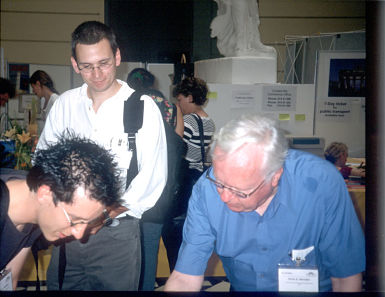
With the SOHO comets it was soon clear that some of these objects did not belong to the Kreutz group. Since the orbital arcs are often just a few hours the orbit calculation is very uncertain. However, playing around with the data I found a pair of comets that could be described basically by a similar orbit. I then used this orbit to check the other objects and found additional four that could be represented by these orbital elements. Brian then issued an IAU Circular announcing the Meyer group and – surprise, surprise – another group he was able to identify: the Marsden group. Later, Rainer Kracht also found the Kracht group. Brian once called us the “comet groupies”. Another funny thing is that we three even named jointly a minor planet, (3635) Kreutz.
Now we have hundreds of Meyer group comets, and I am quite proud to be the discoverer of the second known comet group after the Kreutz group. As a sidenote, a few months later there was a professional astronomers’ meeting in Berlin, the ACM 2002, which I attended, too, because Brian gave a talk on the new groups. Since he knew I was sitting in the auditorium he asked me to stand up and to receive the applause from the professional astronomers for my discovery. This was Brian, he respected the amateur as well as the professional astronomer.
Brian G. Marsden was an expert on celestial mechanics and a longtime director of Minor Planet Center. He was undoubtedly an exceptional man and, moreover, an excellent mentor. Can you name also other astronomers you admired?
Definitely Brian G. Marsden was outstanding. But I am especially impressed by visual comet hunters. Their perseverance and diligence, spending countless sleepless hours in sometimes adverse conditions to finally succeed (or not) in discovering a comet is something I have always admired deeply. Looking back in history, Heinrich Wilhelm Olbers is something of an early professional amateur. He was a physician by profession but discovered comets and minor planets, calculated orbits, and did research on historic, forgotten comets. I cannot compare myself with him, but I feel a certain spiritual relationship.
The parallel with H. W. Olbers is evident. You also calculate comet orbits and study the great comets of the past. In 2003 you linked newly found comet P/2003 T1 (Tritton) with the lost comet D/1978 C2. Was it by chance?
It was a joint work between Sebastian Hönig, discoverer of comet C/2002 O7, and me. Sebastian suggested to me that the orbital elements for this newly discovered comet (which was yet published but still on the NEO Confirmation Page) resembled that of long-lost comet P/Tritton. I did the formal linkage and we reported this to Brian, which was confirmed by him. This in fact started a now almost 20-year long period where I would try to link and identify lost objects – with quite some success, I have to say. I maintain a (non-exhaustive) list of identifications/pre(dis)coveries on my website.
Later you linked more lost comets to other recent discoveries. How does such an identification work?
First, you need a lot of data. I maintain a database of orbits which do include variants which have never been published before or appeared only in obscure and forgotten prints. Also, you need access to the astrometry. For modern comets this is no problem but for older comets it sometimes includes re-reduction work from literature or re-measurement from the scanned plates. Then, software is very important – first, for the calculation of a linkage and integration forward and backward in time and second for checking against unconfirmed comet positions. And I think a bit of instinct is quite important. Usually, I check newly discovered objects for similarities of the orbital elements against my database. If there is a certain probability of coincidence, I try to do a quick linkage. In most cases I’ll see quite quickly if the linkage is feasible or not.
What programs do you use for orbit calculations and for integrations?
Nothing fancy – FindOrb and Guide by Bill Gray, the most accurate tools around. And I have good contacts with Syuichi Nakano who may succeed when I fail.
When you search for linkage of two comets, which orbital elements should be focused on?
Of course the angular elements and the perihelion distance but also the direction of perihelion L and B, which is often a good indicator of a genetical relation.
If someone gets inspiration by reading these lines and wanted to look for long-lost comets too, what would be your advice to him?
Start with known objects, try to simulate such cases in order to learn the tools. One can easily bee fooled by false linkages. Learn about historic formats of astrometric observations, etc. There are all strange forms of observations buried in literature which are hard to interpret at first glance.
And how is it, when you study historic comets? I am fascinated by pictures of great comets of the past. However, since you do not have precise astrometric data, the procedure should be different...
Yes, it is a different case when dealing with historic comets. Here you need to dive deep into historic literature and try to go back to the primary sources. This is very exciting and improves my knowledge of other languages. You also need to interpret the data differently due to other mathematical systems or wordings applied back then. And you need to try to separate fact and fiction. But it is possible as you can see for instance from my identification of 12P/Pons-Brooks with the comets of 1385 and 1457 (and possible the one of 245), or from the newly published orbit for comet C/1558 P1, which was outright wrong before.
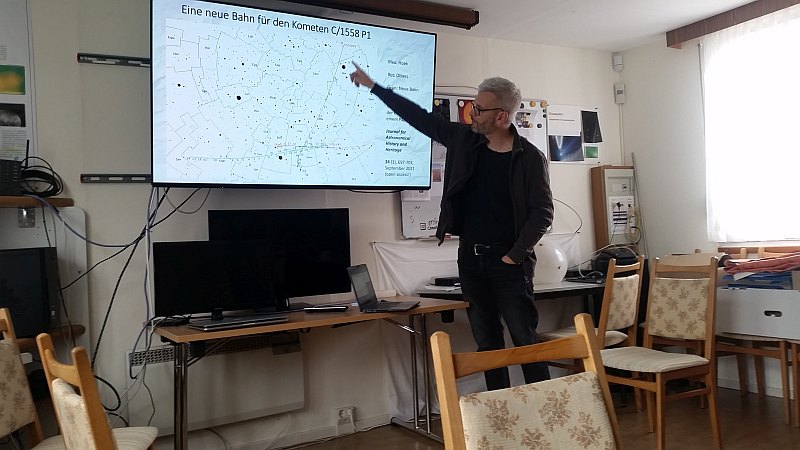
How much time did you devote to research on 12P/Pons-Brooks?
The finding and confirmation of the identity was no big deal - a few hours. What took a lot of time was the writing and research for the long paper which also checked for additional apparitions within the last 2000 years. I haven't counted the time I spend on that but it took a few months until I had a finalized version of the paper.
How do you look for historical books? How do you know which book is worth to read?
First rule: Try to go back to the original source! Most of the very old books are available online. And many libraries offer scan services for handwritings and manuscripts. Sometimes you have to read between the lines to find other interesting sources. Also, journals and correspondences are contain a wealth of information.
Do you personally visit libraries and browse through books one by one?
Yes, I did, 20 years ago. Now there are so much online copy and scan services and even online resources that it is not really necessary anymore. Sometimes I approach the observatories or museums etc directly and ask for a scan.
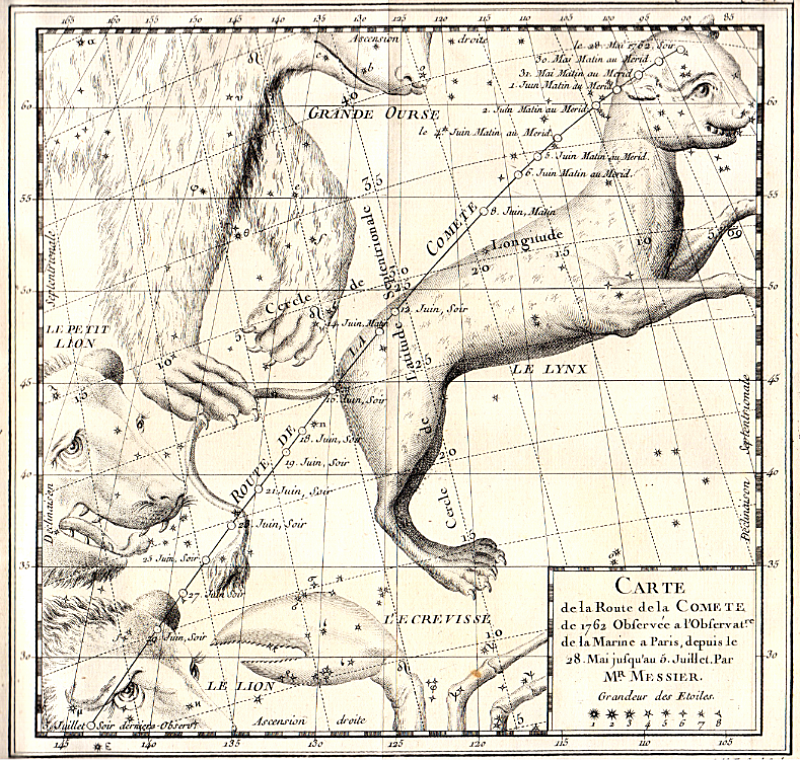
Half century or even older books were probably written not only in German. Did you learned any foreign language to help you with your research?
Not really learned, but improved a basic knowledges – mostly French, Latin and a bit Italian.
Did you travel to a distant library for a specific book?
I did, 20 years ago. For instance I visited Hamburg Bergedorf Observatory to copy old IAUCs.
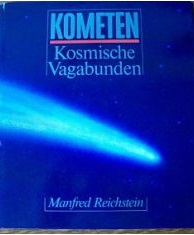
Let's go from old books to relatively younger ones. Do you remember your first astronomy book? And which is your favourite one?
I have not really a favourite book. This book is quite old and gives information on a fairly basic level. But it has many illustrations which sparked a lot of interest back then, especially at a time where such literature was quite scarce.
You have been reading a lot of books about comets. And for some time you are also writing books about them. Together with Gary Kronk you are the author of Cometography vol. 5 and 6. How did this collaboration begin?
I already helped Gary in earlier volumes with a few translations from German or copies from libraries in Germany. For volume 5 he asked me if I want to be co-author – something that was a great honour for me and still is. Of course, I accepted! Now we are about publishing volume 1 of our newest project; a two-volume book on unconfirmed comet discoveries since 1600, which will contain many surprises and new findings. I am very excited about it.
So you say, it will be two-volume book. Are there so many unconfirmed comet discoveries that they wouldn´t fit in one publication? When will be the first volume released?
Yes, there are a lot of unconfirmed comet reports. Some are well known, some are more obscure. There would be even more if you take every small newspaper blurb about a possible comet. Also, we do not simply present the data: We discuss the whole stories in detail, have a look at the personal and cultural backgrounds of the persons involved and try to assess every object with modern tools and information. The release date for the first volume is not yet finalized but I expect it will be in the second half of 2022.

Let´s speak for a while about year 2003. That summer you started your search for asteroids and comets from archival images of Near-Earth Asteroid Tracking (NEAT) project. How did you learn about this archive?
I guess I saw an MPEC mentioning it, or it was some posting in the Minor Planet Mailing list. I cannot remember, really. But once I know how to use it, it was a great help in searching for precoveries or prediscoveries of known comets.
In official MPC discoverer list you have 16 minor planets, while Rob Matson or Sebastian Hönig several hundreds. Why did you quit your hunt in NEAT archive?
The lack of time. It is quite time consuming. After my study I started to work in a job, got married and became father. And add to that that at some point the MPC changed the policy of giving credit for these discoveries. In the beginning the reporter of new objects would receive the credit and the ability to name it. This was dropped at some point, and I simply stopped because of this and the limited time I had. Also, comets were my main interest – not minor planets. So, the only thing I continued with Skymorph was the search for pre-discovery images of comets.
During years 2002 - 2003 you were very active in several fields, which resulted to discovery of Meyer's group of SOHO comets, the linkage of a lost comet with a new one, and the discovery of asteroids from the NEAT archive. Thanks to these, you became known to the community and you were honoured with named asteroid 52005 (Maik). Do you remember how did you learn about it and what were your first thoughts?
It was not really a surprise. Sebastian Hönig and I were contacted by Charles Juels, one of the discoverers, since he wanted to name two minor planets after us. He was asking for information about us to have a correct citation for the name. This means we knew about this honour even before it was officially announced. Of course, at this moment I was very excited and I am still very proud on the naming. In the meantime, I have named most of my 16 minor planets after other people.
The archival images still reveal their secrets after so many years. You found a unknown comet C/2001 Q11 in the NEAT archive. Astronomers simply did not notice it and 9 years passed from its observation when you catched it. Unfortunatelly it has not been named after you. How do you remember to this?
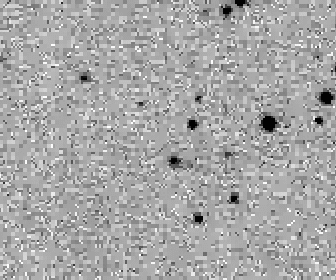
I have mixed feelings about it. The discovery was exciting but if you know what to do quite straightforward. I found a cometary looking object in NEAT images and calculated a first orbit (a so called Väisälä orbit). I was lucky to find additional observations not far away from the discovery position and thus was able to improve the orbit, which in turn enabled me to find even more observations over a much longer timespan. Later I even contacted the surveys directly for additional images. However, I knew the naming rules for comets all too well and it is clearly said that for archive discoveries of a survey the comet will still be named after the survey. Like with the SOHO comets. I had a slight hope that they would decide otherwise, in favour of the amateur and name it NEAT-Meyer, but well. It didn’t happen.
You found a comet, but nevertheless your dream hasn´t come true…
Of course, having my name on a comet is still a dream. Some say that having a named comet group is much better, but I experienced times where visual comet discoverers had their last high time and I always wanted to find one on my own. Somehow I now regret not to have used the 90’s for visual comet hunting instead of just comet observing. The chances then were still very high compared to now. I won’t try an own CCD survey in a small scale, I am a visual observer. I guess I will stick to search for unknown comets in the literature.
What do you consider as your greatest achievement?
Two things. The Meyer group and the identification of comet 12P/Pons-Brooks with the comets of 1385 and 1457 (and possibly one of the year 245). And who knows what’s next?
What are you working on at the moment, do you have a new project?
The named comet of course lingers still somewhere in my mind. But I have set myself a goal to reach 2500 visual comet brightness estimates. I am now at about 1750 since December 1987.
About 20 years ago, data from the NEAT project were released. Nowadays, more data from other big surveys and even from spacecrafts, are available. Are you not tempted to dust off your hunt and repeat the success of comet C/2001 Q11?
I don't think so. I am so occupied with the historic comets that it would be too time consuming to try to identify comets in the large amount of data available from the surveys. What I still do, of course, is to check new comets for identity with old ones. Also, I have still a few projects pending where I research for data to calculate better or first orbits for comets prior 1800 or so. It is so much fun to delve into historic books, manuscripts and writings and, like a detective, collect bits and pieces to eventually come up with something new.
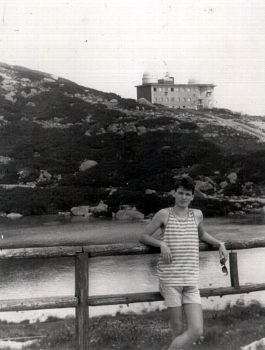
You mentioned that you grown up on a science fiction novels. What about sci-fi movies, do you like them?
Of course, I like good sci-fi movies and I am even a Trekkie. Although one has to say that there is mostly much less “sci” than “fi” present in movies. To be honest, I watch these movies for fun. I am not the one to criticize every scene due to physical incorrectness. That would take the fun out of it. I have as much fun watching Kubrick’s "2001: A Space Odyssey" or Tarkovsky’s "Stalker" as I have fun watching Star Trek. I guess the last sentence may sound strange to some.
What is your best way to relax?
Believe it or not: computer games. I also like hiking quite a lot.

